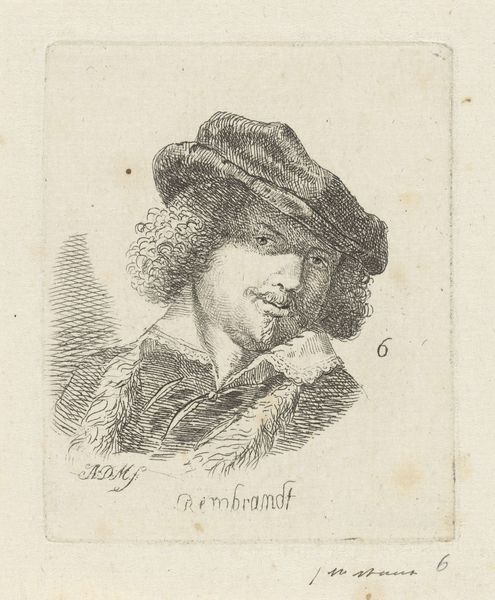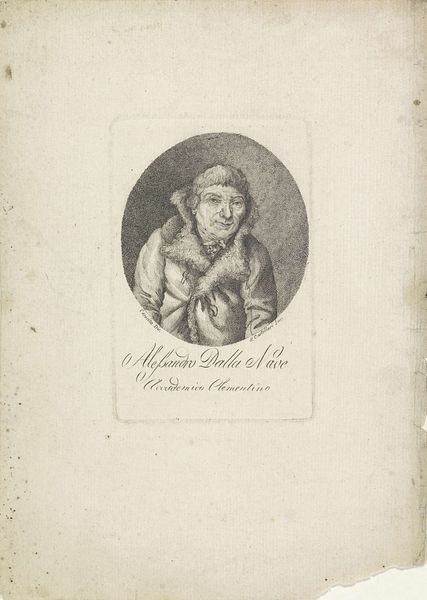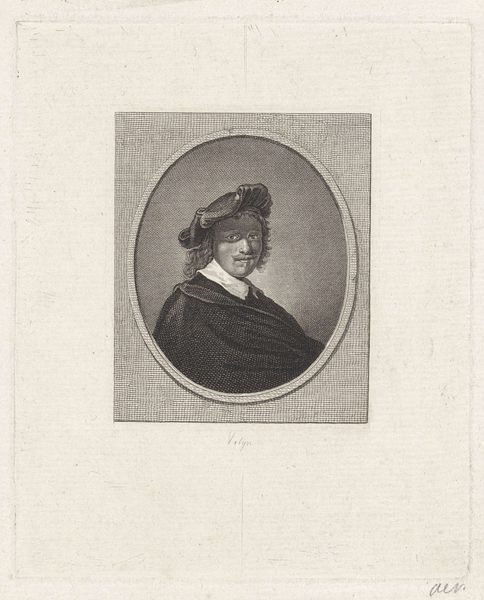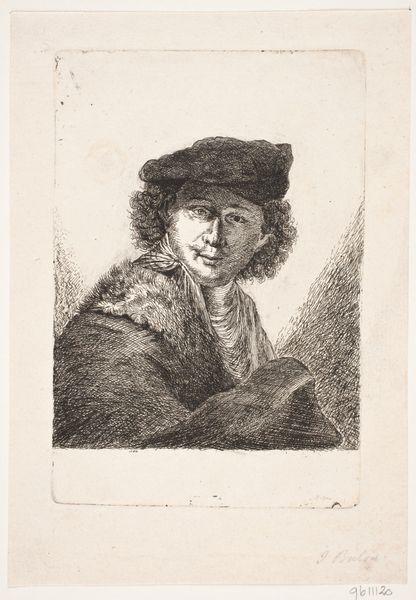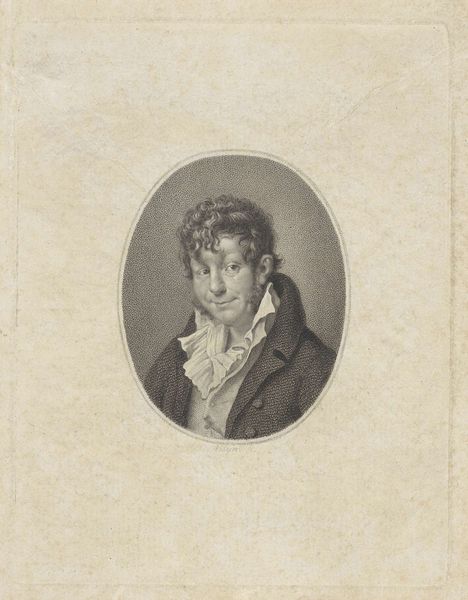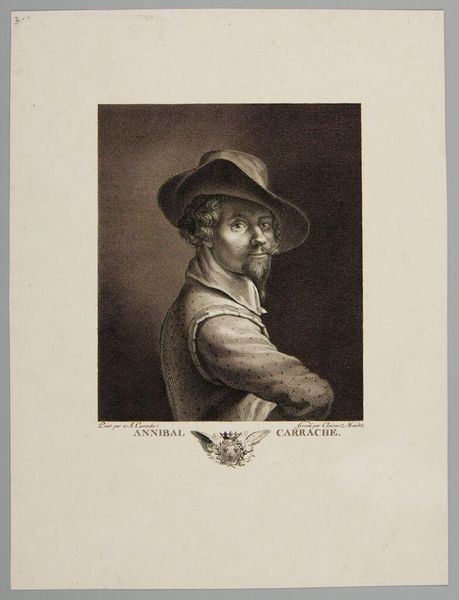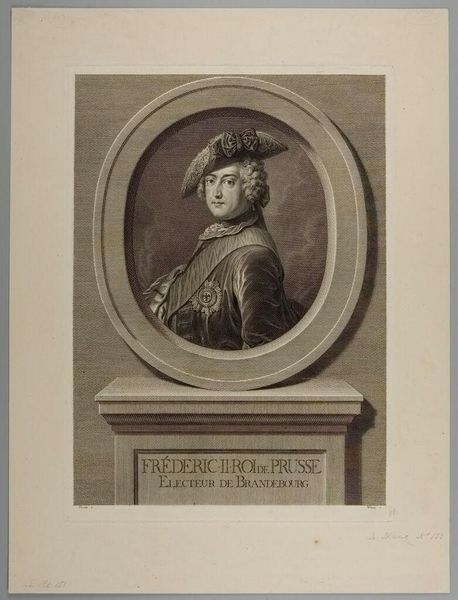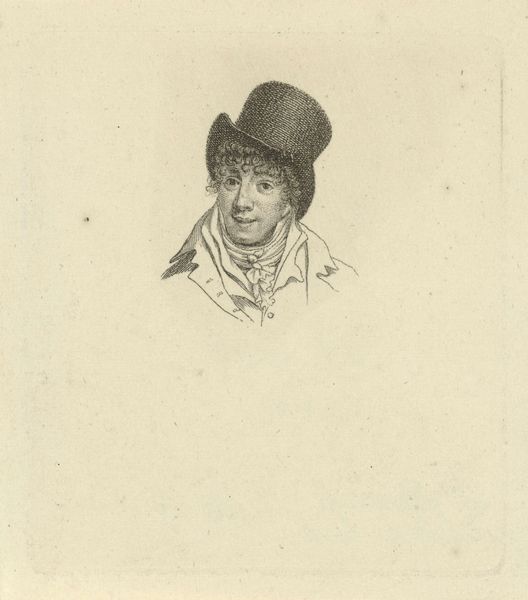
graphic-art, print, engraving
#
portrait
#
graphic-art
#
baroque
# print
#
old engraving style
#
engraving
Dimensions: height 145 mm, width 96 mm
Copyright: Rijks Museum: Open Domain
Curator: Here we have a portrait, an engraving from 1750, by Jean-Baptiste Glomy. It's titled "Self-Portrait with Saskia". What strikes you when you first see it? Editor: Well, there's a stillness to it that’s deceptive, because those cross-hatchings are so vibrant. It feels a little bit haunted and very self-aware. And look at that hat. It gives the work an endearing, very Dutch feeling! Curator: Yes, there's a romantic theatricality, isn't there? The piece, rendered in the old engraving style, places Rembrandt, a famous 17th-century figure, very firmly into the lineage of artistic genius, but, strangely, done 100 years later! Editor: Exactly! This isn't just an image of the master painter; it's the re-imagining of one's persona. You feel the cultural reverence almost radiating off the print. Why copy this image so far removed in time from the real creator of that feeling? The power of celebrity culture? Curator: Well, certainly Rembrandt's place as a master was well-cemented by this point. Remember the importance the Baroque places on portraying grandeur and capturing emotion. This engraving serves as a form of cultural promotion. Prints like these made art more accessible, fostering wider appreciation. Editor: But what about authenticity? An "authentic" moment so late seems rather artificial? Yet, this copy feels very human. There's a touch of the ethereal in that oval framing… a wistful gaze. And yet a sadness as he is thinking back to Saskia. The artist, Rembrandt, through the artist Jean-Baptiste Glomy's eyes, it speaks to memory, history, and ultimately, I think, the limitations of capturing the past truthfully. Curator: A point well-taken! And those very limitations might be precisely what made it a popular image in its own time and continuing onward. It's that very constructed nature which adds meaning and context in understanding its social purpose. Editor: Exactly! Like an echo of genius, transformed by time and touch!
Comments
No comments
Be the first to comment and join the conversation on the ultimate creative platform.
